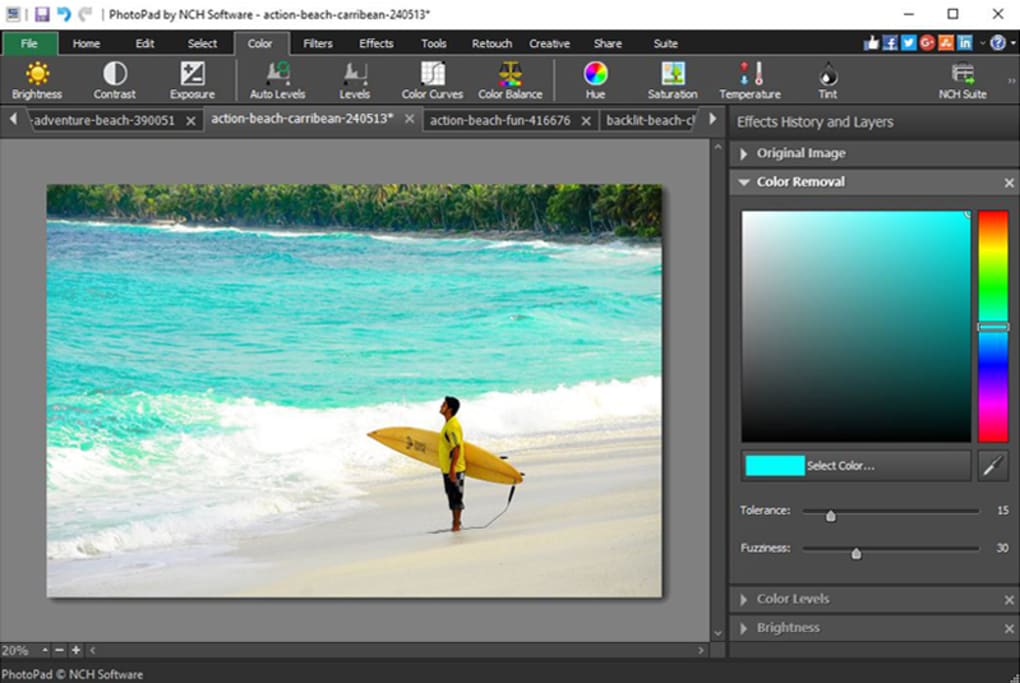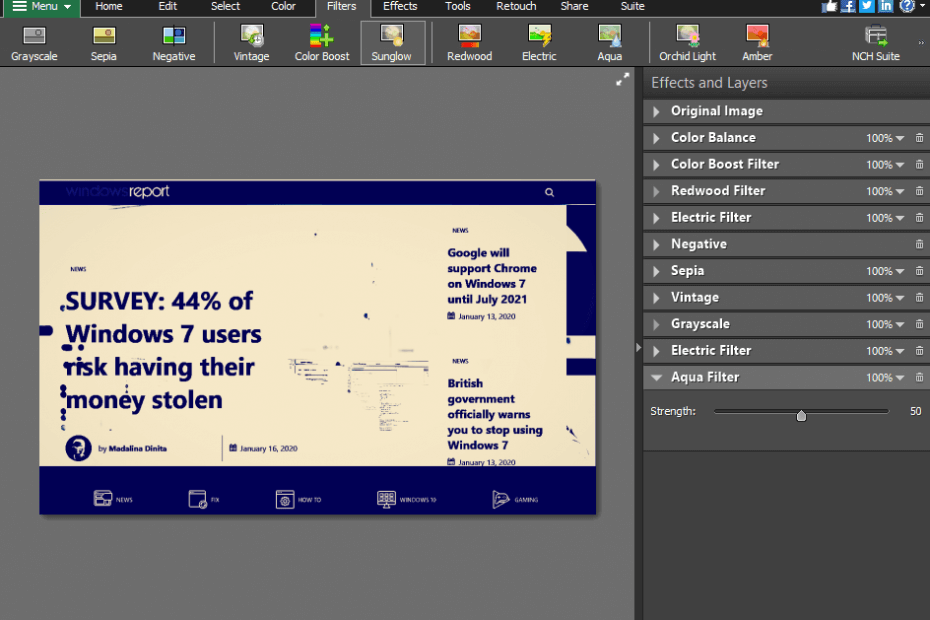

The download links for NCH’s free software can be hard to find on the website. When you install PhotoPad there will be a few follow-up activities like rating the product but there is a misleading pop-up that tells you how to speed up your system. Some of NCH’s free versions are trialware. There is a “suite” of programs that you can optionally and individually install but they are paid products so you will have to find and download a free version if NCH has one.

You need to be aware of the following issues. All tools can apply to the whole image or a region which can be selected using any polygon shape, a lasso, a magnet (to select along the edges of an element) or a wand to select a region with similar attributes. This will frustrate you if you need to do some blending. However, its greatest limitation is that it has no drawing tools apart from a pen and an online clipart collection. Plus you can share your images using Flickr, Facebook, email, DropBox and Google Drive. Built-in are tools to combine photos into a panorama, a collage, or a mosaic (which was not random enough for me). PhotoPad has an extensive range of features that could mean that you don’t have to download other software. This is one example where PhotoPad is not very responsive for users. Just be aware that PhotoPad has to reapply all the changes which can take minutes for the completed image to appear. But if you save it in one of the limited number of savable image formats (BMP, JPEG, PNG) then the history will be lost.

When you save your work as a project file it will reopen with all the history. You can remove any effect from the history and that change will propagate through the layers to the final image. Although layers aren’t explicitly defined by users PhotoPad uses them so you can click on a history item and see what your image looked like at any stage of editing. The feature that really sets PhotoPad apart from the other programs is the history and layers sidebar which shows everything that you have done. The downside is that the editing interface is not highly responsive making it difficult to accurately size objects and select values on a slider. It has a few surprises like the ability to open many image formats including many Raw formats. On the upside it is a very good photo editor for basic users because it has a very consistent interface with tabbed toolbars that duplicate the main menu apart from the View menu. It would be a top product except a few significant issues which I explain below. PhotoPad Photo Editor is free for “non-commercial home use”. Only free for “non-commercial home use” Lacks drawing tools. Consistent interface Excellent history of changes that you can review, undo, delete, or modify at any step Wide range of features Raw file support.


 0 kommentar(er)
0 kommentar(er)
